Hi Everyone,
For those in range, we will doing the first book signing for PEOPLE OF THE SONGTRAIL at Hastings Books in Laramie, Wyoming, next Saturday, May 30th. It should be a fun time! The Hastings folks always do a great job.
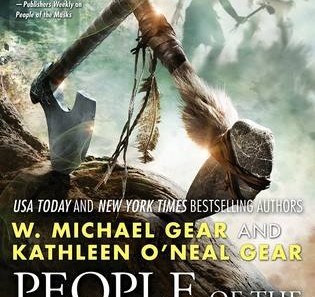
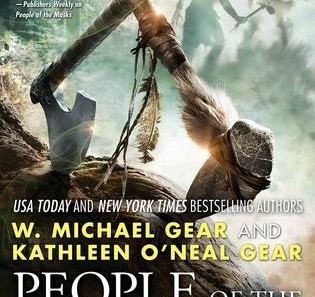
VIKING WARRIOR WOMEN: DID ‘SHIELDMAIDENS’ LIKE LAGERTHA REALLY EXIST?
As archaeologists, we’ve spent over thirty years studying warrior women from a variety of cultures around the world, and, we have to tell you, shieldmaidens pose a problem.
Stories of Viking warrior women are found in a number of historical documents, but several come from factually unreliable heroic sagas, fornaldarsogur. A good example is Hervor’s and Heidrek’s Saga. After the hero, Angantyr, falls in battle his daughter Hervor takes her father’s sword and uses it to avenge his death by killing his enemies. There are similar stories of Brynhilde and Freydis, in Sigurd’s Saga and the Saga of the Greenlanders. But in each case the story is more about myth-making than fact. As well, these are tales of individual women who are highly skilled with swords and fight in battles, but give no evidence for a ‘community’ of women warriors, which the shieldmaidens are supposed to have been.
There are, however, more reliable historical resources. In the 1070s, for example, Adam of Bremen (chronicling the Hamburg-Bremen archdiocese) wrote that a northern region of Sweden near lake Malaren was inhabited by war-like women. But he doesn’t say how many women, nor does he clarify what “war-like” means. Were these women just zealously patriotic, bad-tempered, aggressive, or maybe even too independent for his Medieval Christian tastes? It’s hard to say.
Then we have the splendid references to ‘communities’ of shieldmaidens found in the works of 12th century Danish historian, Saxo Grammaticus, whose writing is sure to make every modern woman livid. Keep in mind, Saxo was likely the secretary of the Archbishop of Lund, and had specific Christian notions about appropriate female behavior. He wrote, “There were once women in Denmark who dressed themselves to look like men and spent almost every minute cultivating soldiers’ skills. …They courted military celebrity so earnestly that you would have guessed they had unsexed themselves. Those especially who had forceful personalities or were tall and elegant embarked on this way of life. As if they were forgetful of their true selves they put toughness before allure, aimed at conflicts instead of kisses, tasted blood, not lips, sought the clash of arms rather than the arm’s embrace, fitted to weapons hands which should have been weaving, desired not the couch but the kill…” (Fisher 1979, p. 212).
Okay. Saxo says there were ‘communities’ of shieldmaidens. Apparently, he means more than one community. How many? Ten? Fifty? Five thousand? In his The Danish History, Books I-IX, he names Alfhild, Sela, and Rusila as shieldmaidens, and also names three she-captains, Wigibiorg, who fell on the field at Bravalla, Hetha, who became queen of Zealand, and Wisna, whose hand was cut off by Starcad at Bravalla. He also writes about Lathgertha and Stikla. So…eight women? They might make up one community, but ‘communities?’
Historical problems like these have caused many scholars conclude that shieldmaidens were little more than a literary motif, perhaps devised to counter the influences of invading Christians and their notions of proper submissive female behavior. There are good arguments for this position (Lewis-Simpson, 2000, pp. 295-304). However, historically most cultures had women warriors, and where there were more than a few women warriors, they formed communities. If the shieldmaidens existed, we should find the evidence in the archaeological record.
For example, do we see them represented in Viking material culture, like artwork? Oh, yes. There are a number of iconographic representations of what may be female warriors. Women carrying spears, swords, shields, and wearing helmets, are found on textiles and brooches, and depicted as metallic figurines, to name a few. One of the most intriguing recent finds is a silver figurine discovered in Harby, Denmark, in 2012. The figurine appears to be a woman holding an upright sword in her right hand and a shield in her left. Now, here’s the problem: These female warrior images may actually be depictions of valkyries, ‘choosers of the slain.’ Norse literature says that the war god, Odin, sent armed valkyries into battle to select the warriors worthy of entering the Hall of the Slain, Valhalla. Therefore, these images might represent real warrior women, but they could also be mythic warrior women.
And where are the burials of Viking warrior women? Are there any?
This is tricky. What would the burial of a shieldmaiden look like? How would archaeologists know if they found one? Well, archaeologists recognize the burials of warriors in two primary ways:
1) Bioarchaeology. If you spend your days swinging a sword with your right hand, the bones in that arm are larger, and you probably have arthritis in your shoulder, elbow and wrist. In other words, you have bone pathologies from repetitive stress injuries. At this point in time, we are aware of no Viking female burials that unequivocally document warrior pathologies. But here’s the problem: If a Viking woman spent every morning using an axe to chop wood for her breakfast fire or swinging a scythe to cut her hay field—and we know Viking women did both—the bone pathologies would be very similar to swinging a sword or practicing with her war axe. Are archaeologists simply misidentifying warrior women pathologies? Are we attributing them to household activities because, well, they’re women. Surely they weren’t swinging a war axe. See? The psychological legacy of living in a male dominated culture can have subtle effects, though archaeologists work very hard not to fall prey to such prejudices.
(2) Artifacts. Sometimes warriors wear uniforms, or are buried with the severed heads of their enemies, but they almost always have weapons: swords, shields, bows, arrows, stilettos, spears, helmets, or mail-coats. A good example is the Kaupang burial (https://blog.britishmuseum.or/2014/04/16/the-viking-way-of-death).
There are many Viking “female weapons burials,” as archaeologists call them. Let us give you just a few examples. At the Gerdrup site in Denmark the woman was buried with a spear at her feet. This is a really interesting site for another reason: The woman’s grave contains three large boulders, two that rest directly on top of her body, which was an ancient method of keeping souls in graves—but that’s a discussion for another article. In Sweden, three graves of women (at Nennesmo and Klinta) contained arrowheads. The most common weapon included in female weapons burials are axes, like those in the burials at the BB site from Bogovej in Langeland (Denmark), and the cemetery at Marem (Norway). The Kaupang female weapons burials also contained axeheads, as well as spears, and in two instances the burial contained a shield boss.
There are many other examples of female weapons burials. For those interested in the details please take a look at the Analecta Archaeologica Ressoviensia, Vol. 8, pages 273-340.
In conclusion, did the shieldmaidens exist? When taken as a whole, the literary, historical, and archaeological evidence suggests that there were individual Viking women who cultivated warriors’ skills and, if the sagas can be believed, some achieved great renown in battle. Were there communities of Viking women warriors, as Saxo claims? There may have been, but there just isn’t enough proof to definitively say so…yet.
However, Lagertha, you personally are still on solid ground. You go, girl.
READ MORE ABOUT IT!
PEOPLE OF THE SONGTRAIL
VIKINGS IN NORTH AMERICA
Lewis-Simpson, Shannon.
Vinland Revisited. The Norse World at the Turn of the First Millennium. Historic Sites Association of Newfoundland and Labrador, Inc., 2000: 295-304.
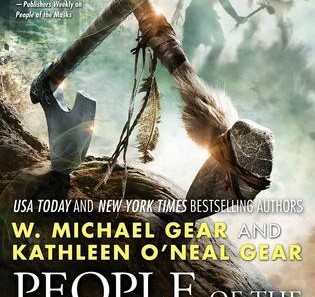
THE 15TH CENTURY VIKING MYSTERY:
DID GREENLAND COLONISTS FLEE TO JOIN THE NATIVE PEOPLES OF AMERICA?
One of the great archaeological mysteries of the northern hemisphere is what happened to the Viking colonists in Greenland? They persevered for over 400 years, from around AD 1000 to roughly 1450, but then they abandoned their villages and vanished. Why?
There are tantalizing historical references. For example, in the 1630s Gisli Oddsson of Skalholt wrote that in the year 1342 the Vikings of Greenland’s Western Settlement, “…of their own free will abandoned the true faith and the Christian religion, having already forsaken all good ways and true virtues, and joined themselves with the folk of America” (Seaver 1996, p. 86). While many archaeologists think this is a real possibility, proof is hard to come by. However, recent archaeological discoveries shed some light on what may have happened.
First, let’s talk about 11th century Viking culture. Who were they? Well, Vikings were farmers. Yes, they avidly explored distant places and conquered the peoples they needed to, but for the most part they farmed cattle, sheep, and goats, as their ancestors had done for generations before them. In fact, around 80% of the Viking diet came from livestock industries, and we know that social identity and status was based upon how many animals you owned and how much land you held. But here’s one of the tidbits of new information: By the middle of the 14th century the Greenland colonists had largely abandoned raising livestock. Instead of livestock, they were eating 80% seal meat. Why? What would force them to abandon farming and take up hunting and fishing instead?
The answer is not simple, but the main reason is they could no longer farm. How do we know? Hundreds of human and animal bones, recovered from Greenland’s archaeological sites, have been examined through isotopic analyses. Okay, what’s an isotopic analysis? There are many things that can be analyzed using isotopes, but, in this case, we’re talking about water and how many atoms of a specific kind of oxygen, 18 O, are contained in water. The number of atoms reflects the temperature at which water was formed in the atmosphere. After forming, the water then falls as rain or snow and is eventually drunk by human beings. All that means is that the number of 18 O atoms that archaeologists find in human or animal skeletal remains reflects the climate. The isotopes tell us that Viking colonists were under siege by the environment in the 14th century.
They must have started noticing the climate change around AD 1250. The growing seasons were becoming shorter. Whereas during the Medieval Warm Period (AD 900-1200), the colonists could cut summer grasses and stockpile hay for winter forage for their animals, when the Little Ice Age settled over Greenland the fjord grasses their livestock depended upon for survival were in increasingly short supply. At the end of the grazing season, there was probably little grass left to cut for hay.
On smaller farms, cattle were at first replaced by sheep and goats. Then they were replaced by pigs. After all, pigs didn’t need hay. They could eat the same things humans did, fish and seafood. But even pigs had disappeared by around 1300.
When they could no longer sustain their livestock, the Vikings started living very much as their Inuit neighbors did; they became hunters and fishers. Were they healthy? Yes. Analyses of the skeletal remains tell us they were not starving. Nor were they plagued by diseases, at least not by diseases that leave telltale signs in bones.
Yet, they disappeared, and we know that part of the reason rests in the far-reaching impacts of the Little Ice Age.
You see, the intense cold affected more than just the colonists’ ability to raise livestock. For one thing, trade with the Old World simply ceased. Prior to 1350, there had been regular ship traffic between Norway, Iceland, and Greenland. After 1350, the northern Atlantic became a nightmare of sea ice. No sane mariner would dare risk travel to Greenland, especially when things at home were growing desperate. At this time, for example, there was a 60% decrease in the population of Norway, and a 30% decrease in Iceland. These dramatic decreases began before the spreading epidemics reached northern Europe. Famines, caused by crop failures, were rampaging across Europe. Who in their right mind would risk a sea voyage to Greenland to trade for luxury goods like walrus tusks and seal skins—the island’s primary trade goods—when the only thing people at home wanted was food?
A very illuminating archaeological discovery was made in 2010 at a Norse farm on Igaliku Fjord. (The Journal of the North Atlantic, Special Vol. III, 2012). Archaeologists from the University of Copenhagan and the University of Aarhus, in Denmark, excavated a cemetery from the late period of Viking colonization and found almost no young women. Women of child-bearing age had all but vanished. If they had starved, died from illness, or been killed in warfare, they’d probably be in the cemeteries. So…where did they go?
Theories abound. For example, the young women might have returned to their ancestral Scandinavian homelands. In fact, one of the last written references from the colonies is a church document that records the wedding between Thorstein Olafsson and Sigrid Bjornsdottir on September 14, 1408, at Hvalsey Fjord. She was a Greenland native, but he was from Iceland. Did he marry her and take her home? Maybe. But that still doesn’t explain the Igaliku Fjord cemetery mystery. Why would the Greelanders marry off all their daughters to foreigners? Clearly a colony without young women is doomed to extinction. The Norse knew that. Did they realize their extinction was at hand and were saving their young women? Doubtful. If they knew they were doomed and they could get away, wouldn’t they all have left?
Our favorite theory is that Gisli Oddsson was correct, they joined the “folk of America,” probably the Inuit. But if so, archaeologists have not yet found the genetic evidence to prove it. For the moment, however, let’s grant that at least some of them did join the Inuit. Assimilation is messy business. How was that accomplished? The young Norse women may have joined the native peoples because they wished to, or in exchange for food or peace, or because they were taken as slaves. Taking slaves was a common practice among both the Inuit and the Norse. For example, one Icelandic chronicle states that in 1379 the Inuit attacked the Norsemen, killed 18, and took two men as slaves (Lewis-Simpson, 2000, p. 117). So, it’s possible that the young women either intermarried with, or were taken as slaves by, the native peoples. Either possibility makes more sense, to us, than shipping them all back to Europe.
The mystery of the missing young women in the cemetery on Igaliku Fjord will stimulate many years of speculation and excavation and, one of these days, archaeologists will discover what happened to them.
Let us hope it’s soon.
READ MORE ABOUT IT!
PEOPLE OF THE SONGTRAIL
http://www.chapters.indigo.ca/en-ca/books/
http://www.gohastings.com/product/BOOK/People-of-the-Songtrail/sku/295265401.uts
VIKINGS IN NORTH AMERICA
Lewis-Simpson, Shannon.
Vinland Revisited. The Norse World at the Turn of the First Millennium. Historic Sites Association of Newfoundland and Labrador, Inc., 2000: 295-304.
PREVIEW! PEOPLE OF THE SONGTRAIL, coming May 26th! http://www.barnesandnoble.com/w/people-of-the-songtrail-kathleen-oneal-gear/1120327521?ean=9780765337252
Father’s voice is urgent. “And the succession, my lord? Who rules now?”
“Harald succeeded him, but the Danish fleet proclaimed his older half brother, Cnut, king. In the confusion, Aethelred the Unready marched back from his exile in Normandy and drove Cnut out of England. Aethelred rules England now and Harald is the Danish king, though Cnut asked Harald to share the kingship with him.”
“Will he?”
The man laughs bitterly. “No. But, trust me, Cnut will be king soon anyway. Harald cannot stand against him.”
Father glances at me, and a chill climbs my spine.
My younger brother, Thord, leans sideways to whisper, “Why did Father look at you?”
“I don’t know.” But a black bubble is swelling in my chest. When it bursts…
“Cnuts army is mending ships. He’s marshaling his forces to return to reconquer England.”
Mother turns her back to us, and I watch her long red curls blow across her shoulders in the cool breeze. She’s whispering to Father, but his tight eyes have fixed upon me and Thord.
“And what of our charge, sir?”
The ealdorman pulls a jangling bag from his belt and hands it to Father. “Personally, I think it’s a cruel myth, but if not, the girl may be useful to keep her mother in line.”
The girl….
Me?
Those of you who’ve read our short story, THE DEAD MAN’S DOLL, have already met Thyra’s mother. Do you really think anyone can keep her “in line”?
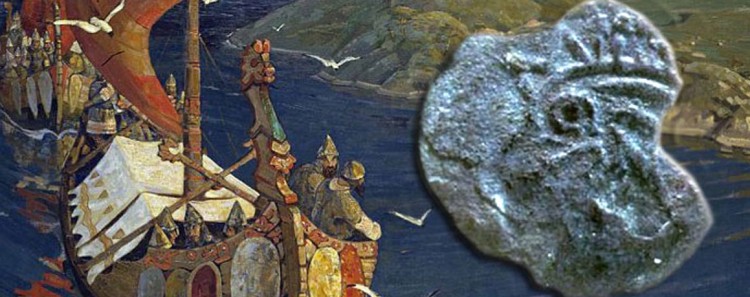
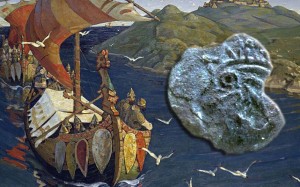 This is another one of those fascinating archaeological mysteries. This Norse penny dates to the reign of King Olaf III, between AD 1065-1080. But it was found in an Native American archaeological site, the Goddard site in Maine, that dates to between AD 1180-1235. How did the Norse penny get there? Ah…that’s a good question!
This is another one of those fascinating archaeological mysteries. This Norse penny dates to the reign of King Olaf III, between AD 1065-1080. But it was found in an Native American archaeological site, the Goddard site in Maine, that dates to between AD 1180-1235. How did the Norse penny get there? Ah…that’s a good question!